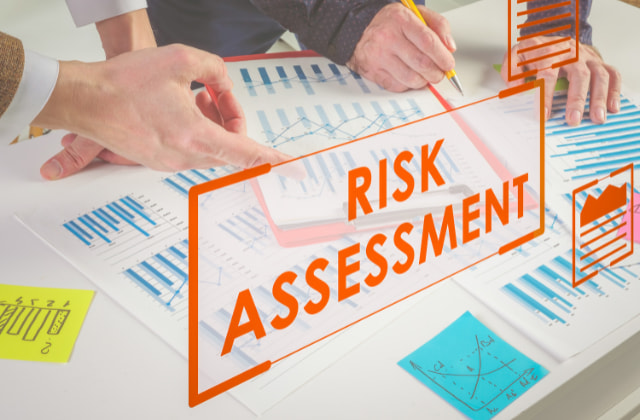The Long-Term Importance of Risk Management in Building Business Advantage
The Long-Term Importance of Risk Management in Building Business Advantage
Blog Article
Exploring the Relevance of Risk Management for Effective Decision-Making Strategies
In the detailed globe of company, Risk Management emerges as a critical variable in the decision-making process. The ability to determine prospective hazards and possibilities, and strategize as necessary, can lead to the distinction in between success and failure.
Understanding the Concept of Risk Management
Risk Management, a critical component in decision-making, is typically misconstrued or oversimplified. Generally, it describes the identification, assessment, and prioritization of dangers to lessen, keep an eye on, and regulate the chance or impact of unfortunate events. However, it's not merely about stopping unfavorable results, but also about recognizing potential opportunities. Risk Management includes regimented and structured methods, utilizing data and informative analyses. It needs a thorough understanding of the organization's context, objectives, and the possible dangers that can thwart them. From monetary uncertainties, legal liabilities, tactical Management errors, to accidents and all-natural calamities, it deals with numerous dangers. Notably, reliable Risk Management is not stationary; it's a continual, forward-looking process that progresses with changing conditions.
The Role of Risk Management in Decision-Making Processes
In the realm of strategic preparation and organization procedures, Risk Management plays an essential duty in decision-making processes. Risk Management thus ends up being an essential device in decision-making, aiding leaders to make enlightened options based on a comprehensive understanding of the dangers involved. Risk Management serves as an important component in the decision-making processes of any type of company.

Exactly How Risk Management Enhances Strategic Preparation
In the context of critical planning, Risk Management plays a crucial function. Starting with the recognition of possible dangers, it additionally prolongs to the application of Risk reduction procedures. The function of Risk Management is not fixed but vibrant, as it demands consistent tracking and adjusting of methods.
Determining Potential Risks

Carrying Out Risk Mitigation
Risk mitigation approaches can range from Risk avoidance, Risk transfer, to risk decrease. Each strategy ought to be tailored to the specific Risk, considering its possible effect and the organization's Risk tolerance. Efficient Risk mitigation calls for a deep understanding of the Risk landscape and the potential impact of each Risk.
Monitoring and Changing Methods
Though Risk reduction is an essential action in calculated planning, continual monitoring and modification of these techniques is similarly vital. It also provides a possibility to assess the success of the Risk Management actions, allowing modifications to be made where necessary, further boosting calculated planning. Monitoring and changing Risk Management strategies is a critical component for boosting a company's strength and critical planning.
Case Researches: Successful Risk Management and Decision-Making
Worldwide of service and finance, successful Risk Management and decision-making usually work as the columns of thriving business. One such entity is a multinational oil business that reduced financial loss by hedging versus changing oil rates. In one more circumstances, a tech start-up flourished by recognizing and accepting high-risk, high-reward approaches in an unpredictable market. An international bank, faced with regulatory unpredictabilities, effectively navigated the circumstance via aggressive Get More Information Risk evaluation and vibrant decision-making. These situations highlight the value of sharp Risk Management in decision-making procedures. It is not the lack of Risk, however the Management of it, that frequently differentiates effective business from unsuccessful ones. These instances underscore the essential role of Risk Management in wikipedia reference strategic decision-making. importance of risk management.
Tools and Methods for Reliable Risk Management
These devices, such as Risk registers and warm maps, aid in identifying and examining potential risks. Risk action strategies, a crucial element of Risk Management, involve accepting, preventing, moving, or mitigating threats. With these methods and tools, decision-makers can browse the facility landscape of Risk Management, therefore promoting informed and efficient decision-making.
Future Fads in Risk Management and Decision-Making Techniques
As we explore the huge landscape of Risk Management, it ends up being evident that the tools and methods made use of today will certainly proceed to progress. The concept of Risk society, where every member of an organization is conscious and entailed in Risk Management, will obtain more prestige. These fads declare an even more comprehensive and proactive approach in the direction of Risk Management and decision-making.
Conclusion

Risk Management hence comes to be an important tool in decision-making, helping leaders to make enlightened selections based on a detailed understanding of the dangers involved. Risk reduction techniques can vary from Risk avoidance, Risk transfer, to run the risk of reduction (importance of risk management). Effective Risk reduction calls for a deep understanding of the Risk landscape and the possible influence of each Risk. Risk reaction strategies, a vital element of Risk Management, involve approving, preventing, transferring, or mitigating dangers. The concept of Risk culture, where every participant of an organization is aware and entailed in Risk Management, will get much more prominence
Report this page